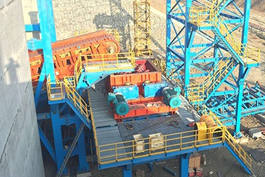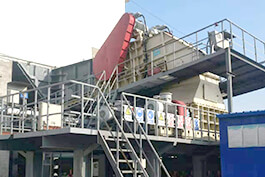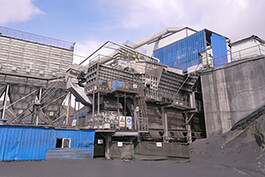Introduction
In heavy industries such as mining, cement, and metallurgy, apron feeders have become indispensable at the front end of production lines due to their strong load-bearing capacity. However, many equipment managers have faced such problems: chain plate wobbling, bolt fractures, and even chain plate detachment causing production line paralysis. The root cause of all these problems often points to a most fundamental yet crucial aspect - How are the pans of the apron feeder attached to the chain? This article will provide an in-depth analysis for you.
Chain plate fixation method of Apron Feeder
Direct bolt fixation type
Structural principle
At both ends or the back of the chain plate of the apron feeder, there are precisely machined installation holes pre-prepared. During installation, a high-strength internal hexagonal cylindrical head bolt is inserted through the chain plate hole and directly fastened together with the link plate on the outside of the chain or a dedicated connection accessory. Usually, high-strength anti-loosening washers or thread locking agents are also provided to prevent loosening.
Advantages
Maintenance is extremely convenient: When a single plate of the apron feeder wears out or gets damaged, maintenance personnel can easily remove the old bolts, replace the single plate, without disturbing the entire chain. This significantly reduces maintenance time and labor costs.
Versatility and economy: The structure is simple, and the manufacturing and procurement costs are relatively low. It is suitable for most medium and light-load conditions of apron feeders.
Disadvantages
Risk of loose bolts: Under the long-term and intense vibration of the apron feeder, even with anti-loosening measures in place, there is still a possibility of bolts loosening. Therefore, strict regular inspections and tightening are necessary.
High quality requirements for bolts: Only high-strength bolts of the specified grade can be used; otherwise, shear fractures may occur, affecting the stable operation of the equipment.
Applicable scenarios
It is highly suitable for conveying medium and light-load materials such as limestone, coal, and fertilizers. It is the preferred choice for those who aim for convenient maintenance and comprehensive cost-effectiveness.
Chain-and-axle connection type
Structural principle
This design integrates the apron feeder's chain plates with the chains. The ends of the chain plates are equipped with precise "sleeves" or "ears", which function directly as part of the chain links. During the assembly of the chains, the pins of the chains will directly pass through the sleeves on the chain plates, thereby firmly "connecting" the chain plates to the entire chain.
Advantages
The connection is extremely firm: The integrated design eliminates the risk of individual parts loosening in bolt connections, maximizing the carrying capacity and impact resistance of the apron feeder.
Smooth and reliable operation: The structure is compact, with almost no gap between the chain plate and the chain, ensuring smooth operation and low noise.
Disadvantages
The replacement process is extremely complex: Whenever any chain plate needs to be replaced, it means that the chain must be disconnected and the corresponding pin removed. This task requires specialized ram tools and ample working space, and it is both time-consuming and labor-intensive.
Applicable scenarios
Designed specifically for heavy and super-heavy working conditions, such as the transportation of large blocks of raw ore in large metal mines and the transportation of high-temperature clinker in sintering plants, it is the ultimate guarantee for the long-term stable operation of the equipment.
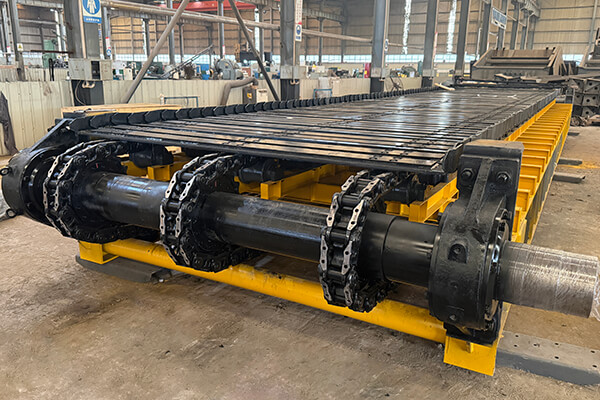
Slot/Hook Connection
Structural Principle
V-shaped slots or hooks are designed on the special chain of the apron feeder, while the edge of the chain plate is machined to a shape that perfectly matches them. During installation, simply tilt the chain plate at an appropriate angle, align it with the slots or hooks on the chain, and then level it out to complete the "tool-free" installation.
Advantages
Installation speed is extremely fast: Without any tools, the chain plates can be easily installed and removed on the apron feeder, significantly enhancing the efficiency of maintenance and cleaning.
Disadvantages
Limited impact resistance: When transporting large, impact-prone materials, there is a risk that the chain plates may "jump out" of the slots.
High manufacturing precision requirements: The processing precision of the chain plates and chains must be extremely high; otherwise, it will affect the tightness of the connection, resulting in unstable operation.
Applicable scenarios
It is mainly applied to apron feeders for light to medium-sized loads, and is suitable for industries where chain plates need to be frequently replaced or where equipment internal cleaning is required, such as production lines in certain food, chemical or packaging industries.
Considerations for choosing the chain plate fixation method
Material characteristics
Large pieces, sharp, high-impact materials
Work condition analysis: When the material falls, the impact force is extremely large, and the sharp edges and corners will exert a huge pulling force on the equipment.
Optimal choice: Chain connected to the shaft
Decision reason: Only this integrated structure can withstand the huge impact and bending moment. Bolts are prone to shear fracture or loosening under this working condition, while the shaft-connected type evenly disperses the impact force through the pin shaft to the entire chain, with unparalleled reliability.
High abrasion resistance, medium-low impact force materials
Condition analysis: The materials cause severe wear on the surface of the chain plate, but the impact force is relatively controllable. The chain plate itself is a vulnerable component and needs to be replaced regularly.
Optimal choice: Bolt direct fixation type
Decision reason: While ensuring the connection strength, the requirement for maintenance convenience becomes the primary concern. When a single chain plate reaches the limit of wear, it can be quickly replaced separately, minimizing downtime to the greatest extent and achieving the highest overall economic benefits.
Lightweight, viscous, and requiring frequent cleaning materials
Process analysis: The load is relatively light, but the materials may adhere to the equipment and require frequent shutdowns for cleaning or replacement of the chain plates to accommodate different materials.
Best choice: Slot/hook type connection
Decision reason: The advantage of no tools required for quick disassembly and assembly is greatly enhanced in such working conditions, which can significantly improve cleaning and maintenance efficiency and ensure production flexibility.
Temperature and Corrosion
High-temperature conditions
High temperatures cause metal expansion and reduce the strength of bolts. In this environment, the overall structural advantage of the shaft-through type becomes more prominent, while the bolt-type requires special high-temperature bolts and anti-loosening solutions, increasing complexity and cost.
Corrosive environments
Corrosion can "bite" the threads, making it difficult to disassemble the bolt-type when replacing. While the shaft-through type's pins may also rust, through designs such as high-pressure oil nozzles, maintenance becomes more controllable.
Maintenance points for Apron Feeder
Transmission system
Check the operating conditions of the motor and reducer, ensuring there is no abnormal noise, vibration or overheating; inspect whether the coupling connection bolts are tightened, and whether the elastic elements are aged or damaged. Replace them in time if necessary.
Check the oil level and quality of the reducer. Add lubricating oil if the oil level is below the scale line (add according to the equipment manual model), replace completely if the oil becomes turbid or emulsified. Clean the ventilation holes to prevent blockage.
Maintenance of chain plates and chain wheels
Check for deformation, cracks or fractures in the chain plates, and whether the connecting pin shaft is loose. Replace immediately if damaged; check the tension of the chain plates, with the middle sag not exceeding 20mm being appropriate. Tighten with the tensioning device (such as a screw rod or hydraulic cylinder) if too loose to avoid chain jumping or deviation.
Clean the accumulated materials on the surface and bottom of the chain plates weekly to prevent increased wear of the chain plates due to material accumulation; check the wear of the chain wheel teeth, replace immediately if the tooth tip becomes sharp or there is chipping, to ensure good meshing between the chain wheel and the chain.
Troughs and guiding devices
Check the flexibility of the upper and lower troughs, for any jamming or abnormal noise. Check for oil leakage from the bearing seat, and replace the damaged troughs immediately to avoid chain plate deviation due to uneven force.
The gap between the two side guiding baffles and the chain plates (generally maintained at 5-10mm), adjust the position of the baffles if the gap is too large to prevent material overflow or edge wear of the chain plates; clean the adhered materials on the guiding device to ensure stable chain plate running trajectory.
Electrical and safety devices
Daily check the sensitivity and reliability of the emergency stop button, overload protection device, and deviation sensor, test the fault alarm function, to ensure that the apron feeder can stop immediately when triggered.
Weekly check for any damage to the cable lines, loose connections, good sealing of the motor junction box, to prevent dust and moisture from entering and causing a short circuit; clean the dust in the electrical control cabinet, check the wear of the contactor contacts, and grind or replace if necessary.



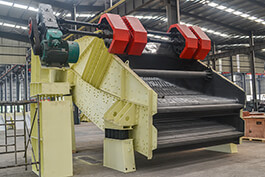
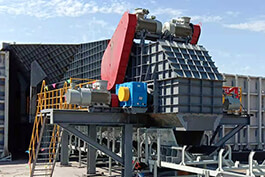
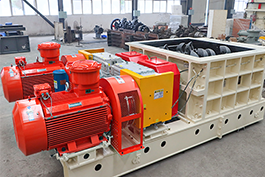
.jpg)
